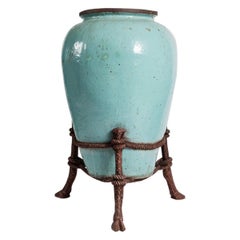Continental US - Ceramics
to
255
1,981
1,982
1,348
1,882
94
5
58
22
13
12
5
4
4
2
2
2
1
1
1
1
331
581
970
99
352
231
121
38
4
12
16
5
9
15
12
9
5
1,930
985
145
111
107
1,803
1,605
988
510
116
1,981
1,981
1,981
27
16
14
13
10
Item Ships From: Continental US
Atelier Saigon, Pair of Large Urns with Rope and Hoof Base Motifs, Vietnam
By Atelier Saigon 1
Located in New York, NY
Born of the collaboration between a Parisian antiques dealer and a rural Vietnamese artists' community, these impressive monumental urns are a testam...
Category
2010s Vietnamese Continental US - Ceramics
Materials
Steel
Recently Viewed
View AllMore Ways To Browse
Japanese Oni
Porcelain Censer
Japanese Hirado
Japanese Satsuma Bowl
Japanese Shi Shi
Mashiko Pottery
Japanese Imari Box
Nabeshima Porcelain
Nanking Porcelain
Japanese Ceramic Sake Bottle
Japanese Kutani Early 20th Century
Oribe Ceramics
Porcelain Japanese Statues
Hirado Porcelain
Japanese Bizen Ware Pottery
Japanese Kutani Figure
Ko Kutani
Kutani Figure
